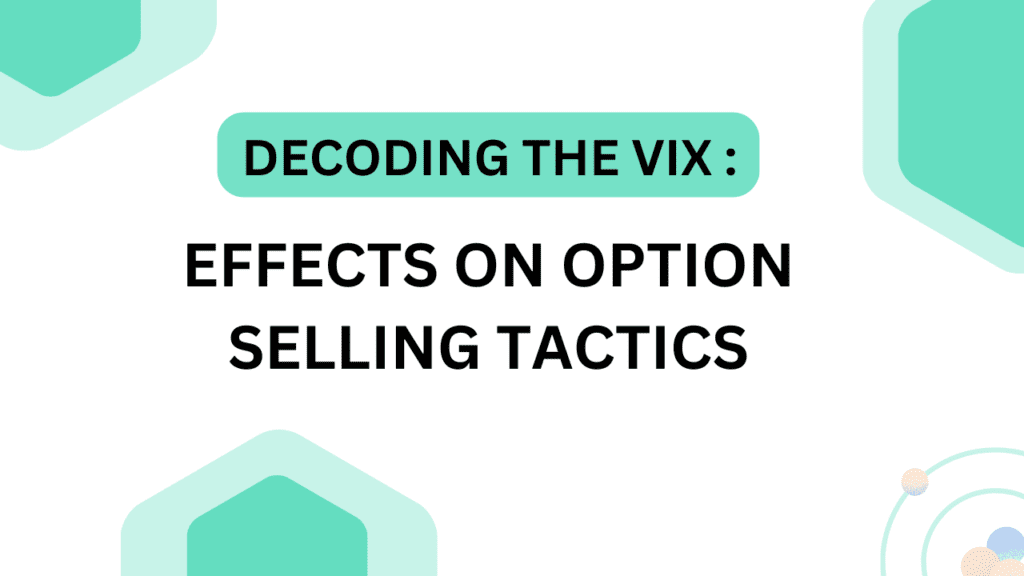Decoding the INDIA VIX: Effects on Option Selling Tactics

The financial markets can be a rollercoaster, and options traders need all the intel they can get. Enter the VIX, often nicknamed the “fear gauge.” This blog dives into what the VIX is, how it’s calculated, and why it’s a game-changer for options sellers.
What is the VIX?
Think of the VIX as a market mood ring. It’s a real-time index that reflects investor expectations for volatility over the next 30 days. Developed by the Chicago Board Options Exchange (CBOE), the VIX uses S&P 500 option prices to gauge this volatility.
Unveiling the VIX Calculation
Think of the VIX as a complex recipe. It takes the implied volatilities of various S&P 500 option prices, both in-the-money and out-of-the-money, and blends them into a single number using a sophisticated formula. This number represents the expected volatility of the S&P 500.
The VIX Whisperer: What it Tells Us
- Low VIX: A low VIX (below 20) suggests a calm market with investors feeling confident and volatility expectations subdued.
- High VIX: A high VIX (above 30) signifies market jitters and potential for sharp price swings.
The VIX and Option Selling Strategies: A Match Made in Market Heaven
Since option sellers have the obligation to buy or sell the underlying asset if the option is exercised, the VIX is their secret weapon. Here’s how:
The Premium-Volatility Tango
- High VIX: When fear reigns (high VIX), option premiums skyrocket. This translates to higher potential income for sellers, but beware, the increased volatility also brings on greater risk.
- Low VIX: Calmer markets (low VIX) mean lower premiums, but the risk factor dips as well.
Crafting Strategies Based on the VIX
- High VIX: To hedge their bets, sellers might choose wider strike prices (further from the current market price). This allows them to benefit from high premiums while reducing the chance of the option being exercised. Additionally, using spread strategies like credit spreads can limit potential losses while still capturing premiums.
- Low VIX: With lower volatility, sellers can get away with narrower strikes (closer to the current price). This might mean lower premiums, but the odds of the option expiring worthless (meaning no payout to the buyer) increase. Low volatility environments are also ideal for complex strategies like iron condors, where sellers capitalize on the expected stability by collecting multiple premiums from selling both call and put spreads.
Taming the VIX: Risk Management Essentials
The VIX might be a valuable tool, but effective risk management is crucial, especially in a market prone to volatility swings. Here are some tips for option sellers:
- Stay VIX-Savvy: Regularly monitor the VIX to understand market sentiment and adapt your strategies accordingly.
- Diversification is Key: Spread your bets across different assets and expiration dates to minimize the impact of unexpected volatility spikes.
- Stop-Loss and Limits: Implement stop-loss orders to automatically exit positions if they reach a certain loss threshold. Similarly, set profit targets to lock in gains.
The Takeaway
The VIX is a valuable tool for options sellers. By understanding its connection to market volatility, sellers can craft informed strategies that balance risk and reward, ultimately navigating the ever-changing options landscape with greater confidence.